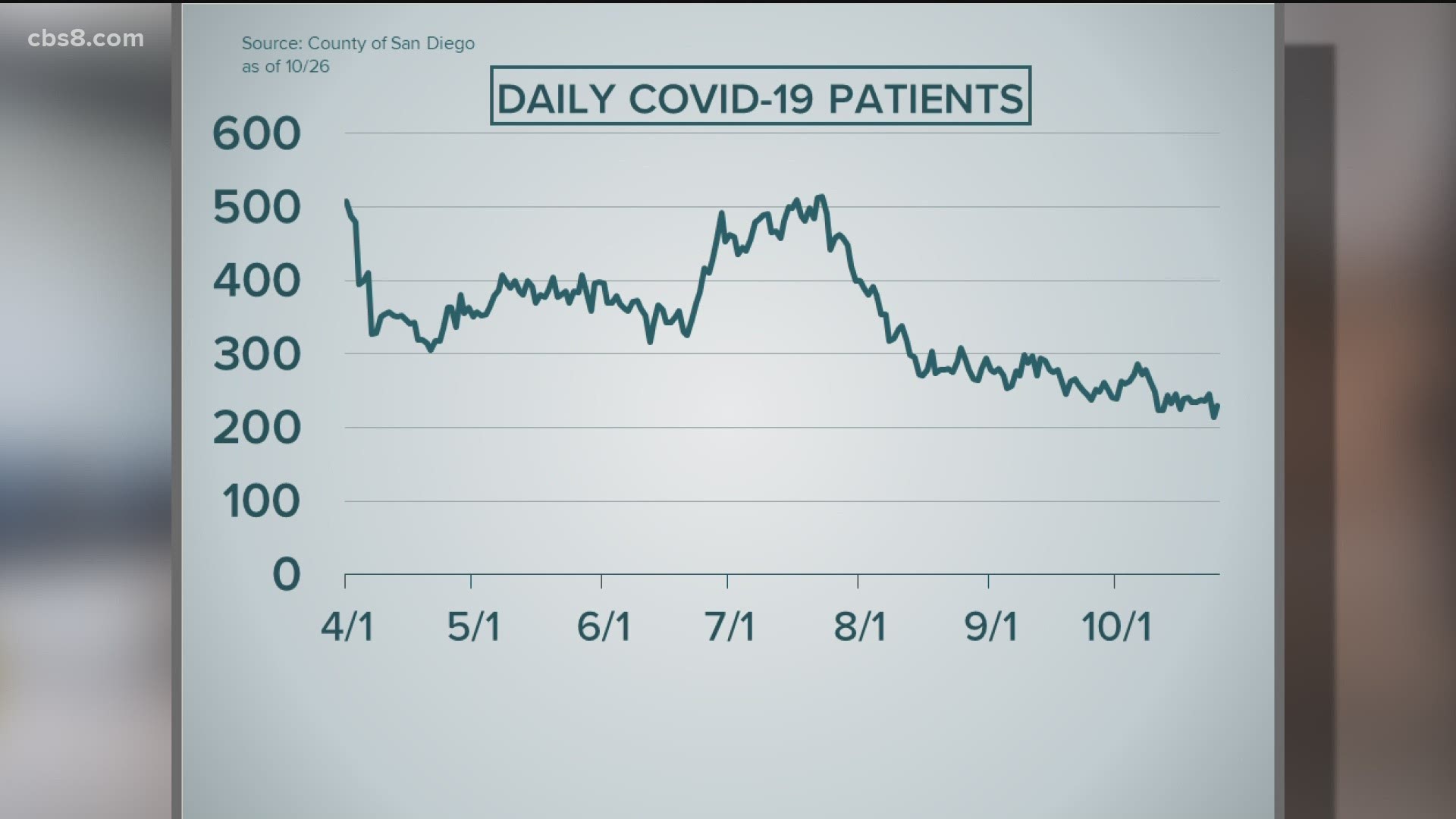SAN DIEGO COUNTY, Calif. — San Diego County will remain in the red tier after the state calculated its weekly adjusted case rate at 6.5 on Tuesday. The county has remained in the upper limits of the red tier since Sept. 1 when California began using its Blueprint for a Safer Economy metric.
The county escaped qualifying for the more restrictive purple tier because it continues to do more testing than the state median. The state gives credit to counties that do more than the median testing volume and penalizes those that test below the median. Without the credits, San Diego would have had a rate of 7.4.
Gov. Gavin Newsom said statewide hospitalization numbers and the percentage of positive cases have “slightly” increased over the past week.
“The real headline for us in terms of alarm bells and red flags is the positivity rate. The positivity over a 14-day period is holding below 3%. It’s been trending down and we're seeing it go slightly back up,” said Newsom.
San Diego hospitals have coped with demand for the duration of the pandemic. On Oct. 24 there were just 214 patients with COVID-19, the lowest since the county began reporting this figure on April 1.
However, state officials are bracing for a potential increase in hospital numbers, which tend to lag three to four weeks behind the onset of illness.
“We’re working very closely with those counties and their health officers and continuing to prepare for our winter months when more people will start mixing – holidays when more people start coming over and enjoying the holidays outside of their core household cohorts and we're obviously concerned about the prospects of seeing these admissions go up and seeing these hospital rates go up,” said Newsom.
California is also working on plans for an eventual vaccine.
It joined Washington, Oregon, and Nevada in forming a “scientific safety” workgroup made up of experts who will be tasked with evaluating the vaccine prior to distribution.
“We intend to and are going to work very hard to make sure the trust of the public is what we have and are sharing this information in a clear and concise way without delay,” said Mark Ghaly, M.D., M.P.H., Secretary of California Health and Human Services.
The group is not tasked with conducting its own trial.
Tuesday’s announcement came as the U.S. Food and Drug Administration published an opinion piece to reassure Americans about the safety of any approved vaccine.
Several vaccines are in Phase 3 trials, which will involve 30,000 people or more each.
“This process will not be rushed. There will be no shortcuts in developing the relevant Phase 3 efficacy results. Any vaccine showing efficacy must also be very safe,” wrote Peter Marks, M.D., who serves as Director of the Center for Biologics Evacuation and Research.
Ghaly emphasized the review by the western states will not delay the rollout of the vaccine.
Separately, the state is also working on plans to distribute the vaccine, beginning with those who it determines should be prioritized.
While President Donald Trump promised a vaccine would be coming in the next few weeks, drug manufacturers believe it will take time to begin production and then eventually produce enough for all Americans willing to take it.
California plans to distribute the vaccine in three phases:
- Phase 1 – limited doses available
- Phase 2 – large number of doses available
- Phase 3 – routine vaccination
Phase 1 would focus on vaccinating healthcare workers who treat COVID-19 patients or who are likely to be exposed to the virus. It would then vaccinate people at highest risk of severe illness or death from COVID-19, such as people over the age of 65 with underlying medical conditions, and other essential workers.
Phase 2 would expand the virus to “critical populations,” such as communities that have been or are being hit hard by the virus. Finally, Phase 3 would offer it to everyone without restrictions.
“We intend to and are going to work very hard to make sure that the trust of the public is what we have,” said Ghaly. “Sharing this information in a clear, concise way without delay is where we expect and plan to be when those first doses of vaccine arrive to California.”

